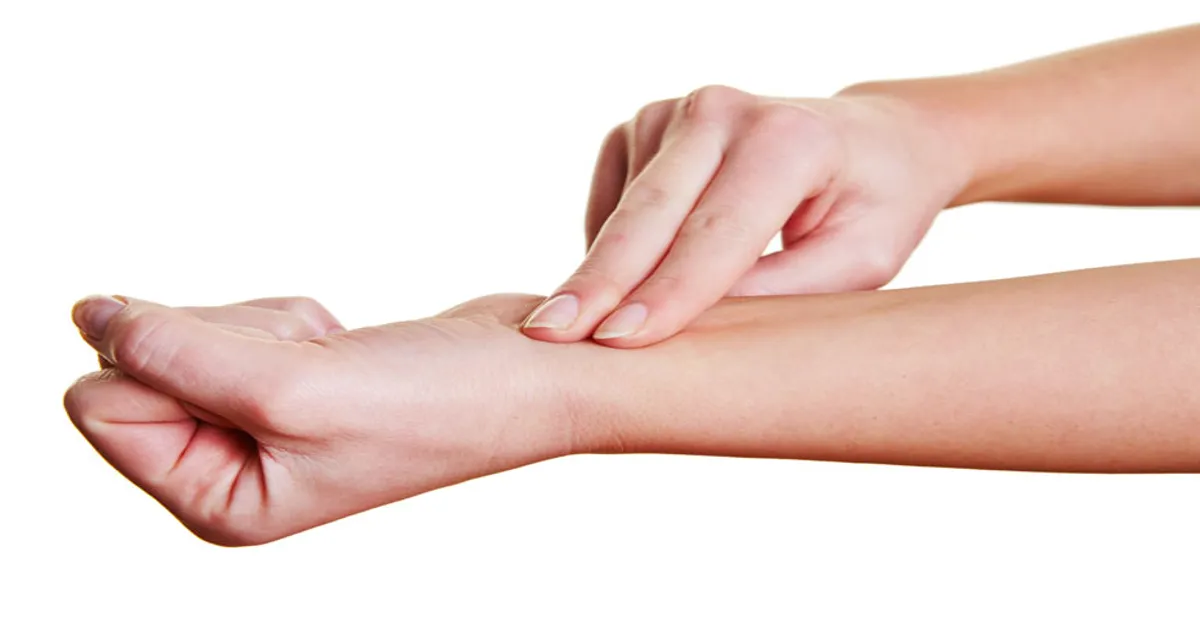As you go about your daily life, have you ever stopped to consider the different patterns and rhythms that make up the world around us? From the beating of your own heart to the pulsing of the ocean waves, there is a constant flow of movement that is both fascinating and essential for life. But have you ever wondered what a pulse looks like? Join us on a journey of discovery as we explore the intricate nature of pulses and how they are more than just physical sensations. Get ready to dive into the world of pulses and uncover their hidden beauty and importance in our lives.
Pulses are not just limited to the human body; they are found in every aspect of nature. From the flickering of fireflies to the sway of trees in the wind, pulses are present in all living and non-living things. They are a reflection of the interconnectedness of all things and play a vital role in maintaining balance and harmony in the world.
The Importance of a Pulse
A pulse is a vital sign that reflects the rhythmic expansion and contraction of arteries as blood is pumped through the body. It is an important indicator of heart health and can provide valuable insights into a person’s overall well-being. But what does a pulse actually look like? Let’s break it down.
Firstly, a pulse is not something that can be seen with the naked eye. It is an internal process that can only be felt by placing fingers on certain pulse points in the body. These pulse points include the wrist, neck, and groin, where arteries are closer to the surface.
When measuring a pulse, a healthcare professional will typically use two fingers, either the index and middle finger or the second and third finger, and press lightly on the pulse point. The pulse will feel like a rhythmic throbbing or tapping sensation. The rate and rhythm of a pulse can vary among individuals and can also change depending on factors such as age, physical activity, and emotions.
A normal resting pulse for adults is between 60-100 beats per minute, but this can be lower for athletes and higher for infants and children. But what does a normal pulse look like on a graph? A pulse waveform typically consists of peaks and valleys, with each peak representing a contraction of the heart, also known as systole, and each valley representing a relaxation of the heart, known as diastole. The distance between each peak is known as the pulse pressure.
In addition to the rate, rhythm, and waveform, a pulse can also be evaluated for its strength or amplitude. A strong pulse indicates a healthy heart, while a weak pulse can be a sign of underlying health issues. In conclusion, while a pulse cannot be seen, it can be felt and evaluated for important information about a person’s health.
By understanding what a pulse looks like and how it is measured, we can better monitor our own health and seek medical attention if necessary. So the next time you feel your pulse, remember that it is not just a sign of a beating heart but a window into your overall well-being.

The Pulse Rate
Pulses are a common topic in the medical world, but have you ever wondered what a pulse actually looks like? Well, wonder no more! In this blog post, we will explore the appearance of a pulse and explain what it means for your health.
Understanding Pulses: Before we dive into what a pulse looks like, let’s first understand what it really is. A pulse is the rhythmic expansion and contraction of an artery that is felt when blood is pumped from the heart. It is a vital sign that reflects the strength and efficiency of your heart’s pumping action.
The Look: Now, onto the main question – what does a pulse look like? Well, if you were to visually see a pulse, it would look like a small bulge or wave on the surface of the skin. This is caused by the force of blood being pushed through the artery with each heartbeat. Depending on the location of the pulse, it may appear as a slight movement under the skin or a visible pulsation.
Where to Find It: The most common place to check for a pulse is on the wrist, just below the thumb. This is called the radial pulse.
However, pulses can also be found in other areas such as the neck, behind the knee, and on the top of the foot. These different locations can provide valuable information about your heart rate and blood flow to different parts of your body.
Abnormal: Pulses can vary in strength, rate, and rhythm. A normal pulse should feel steady and strong, with a regular rhythm. Any changes in these factors may indicate an underlying health issue and should be discussed with a medical professional.
So, there you have it – a pulse may not be as mysterious or elusive as you thought. By understanding what a pulse looks like and how to properly check it, you can monitor your heart health and catch any potential issues early on. Remember, a strong and regular pulse is a good sign of a healthy heart.

Measuring the Pulse
Have you ever wondered what a pulse looks like? Well, this vital sign can actually tell us a lot about our overall health. A pulse is the rhythmic beating of our heart, which is responsible for pumping blood and oxygen throughout our body. It can be felt in various parts of our body, such as our wrist, neck, or the inside of our elbows.
So, what does a pulse look like? It can be described as a wave-like motion that can be seen or felt when our heartbeats. The strength and rhythm of our pulse can vary depending on factors such as age, fitness level, and underlying health conditions. A strong and regular pulse is a sign of a healthy heart and good blood flow, while a weak or irregular pulse may indicate an underlying issue.
To get a better understanding of what a pulse looks like, let’s break it down into its components. The pulse has two main characteristics: rate and rhythm. The rate refers to the number of times our heart beats per minute, while the rhythm refers to the pattern of those beats.
A normal resting heart rate for adults is between 60-100 beats per minute, and the rhythm should be steady and consistent. In addition to the rate and rhythm, the strength of our pulse can also provide valuable information about our health. A strong, bounding pulse may indicate high blood pressure or an overactive thyroid, while a weak pulse can be a sign of dehydration or a heart condition.
So, the next time you feel your pulse, take a moment to observe its rate, rhythm, and strength. It can give you valuable insights into your overall health and well-being. And if you notice any changes or irregularities, be sure to consult with your doctor for further evaluation.
A pulse may seem like a simple and insignificant bodily function, but it can actually tell us a lot about our health. Understanding what a pulse looks like and the factors that can affect it is essential for maintaining a healthy heart and body. So, keep an eye on your pulse and listen to what it has to say about your well-being.
Statistical Information: what does a pulse look like
| Pulse | Description | Example |
|---|---|---|
| Regular | Occurs at regular intervals and stays consistent | 60 beats per minute |
| Irregular | Does not follow a consistent pattern, can be fast or slow | 90 beats per minute, then 70 beats per minute |
| Bounding | Strong and forceful pulse felt throughout the body | 100 beats per minute |
| Weak | Hard to feel, lack of force in the pulse | 50 beats per minute |
| Thready | Pulse feels like a thin thread, weak and faint | 80 beats per minute |
| Slow | Pulse rate is slower than normal | 40 beats per minute |
Important Notice for readers
Attention all readers! Are you curious about what a pulse looks like? Look no further, as our article dives deep into the visual representation of a pulse. With detailed descriptions and images, you’ll gain a better understanding of this vital sign. Don’t miss out on this informative piece. Keep reading to discover what a pulse really looks like.
Frequently Asked Questions [FAQs]
What is the significance of a pulse in the medical field?
A pulse is a vital sign that helps doctors and nurses monitor a person’s heart rate and overall health.
How can you check your pulse at home?
You can check your pulse by placing two fingers on your wrist or neck and counting the beats for one minute.
What are the different factors that can affect a person’s pulse rate?
Factors such as age, fitness level, emotions, medications, and medical conditions can all have an impact on a person’s pulse rate.
Is it normal to have a fluctuating pulse rate?
Yes, it is normal for a person’s pulse rate to vary throughout the day depending on their activity level and other factors.
How does a pulse differ from a heart rate?
A pulse is the rhythmic throbbing of the arteries caused by the heart pumping blood, while heart rate is the number of times the heart beats per minute.
Conclusion
The pulse is a vital sign that reflects the overall health of an individual and can provide important information about their heart rate, rhythm, and blood flow. By understanding what a pulse looks like, we can monitor our own health and seek medical attention when necessary. Additionally, advances in technology have allowed for more accurate and convenient ways to measure and track our pulse.
However, it is important to note that a pulse is not just a numerical value, but a representation of our body’s functioning and well-being. Let us continue to prioritize our health and listen to our bodies’ signals.

